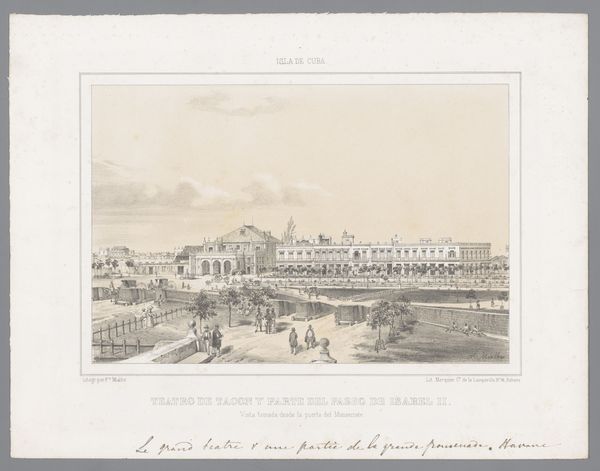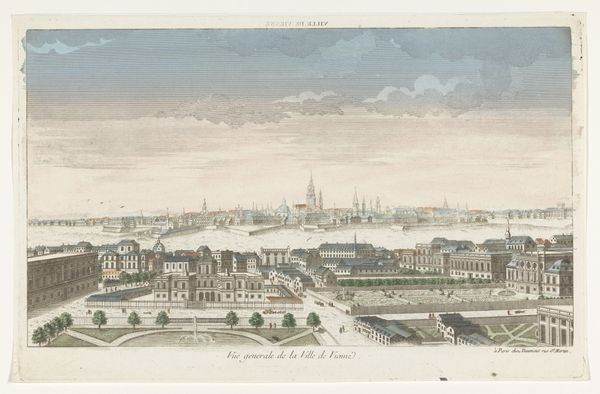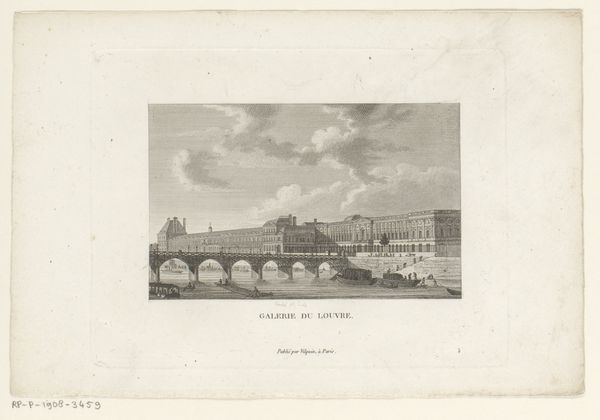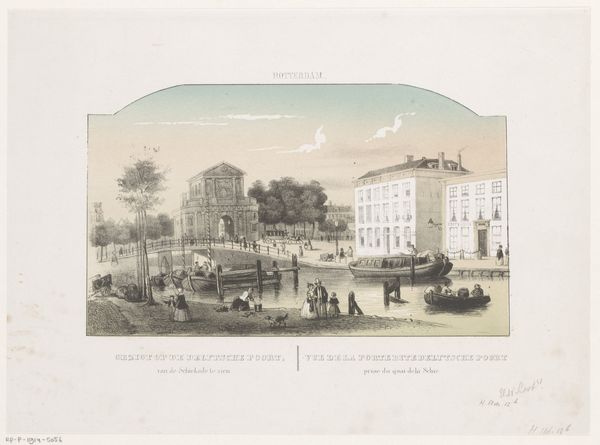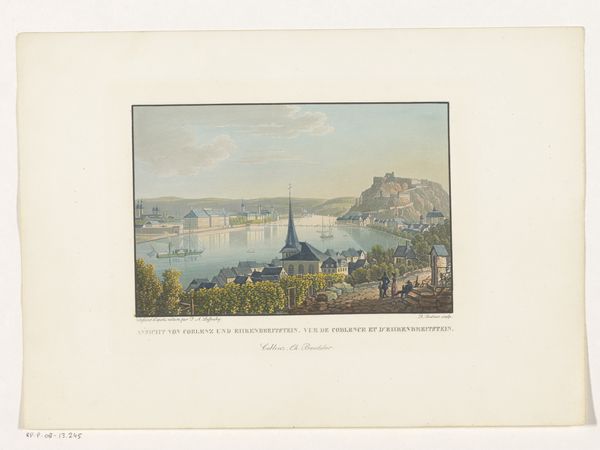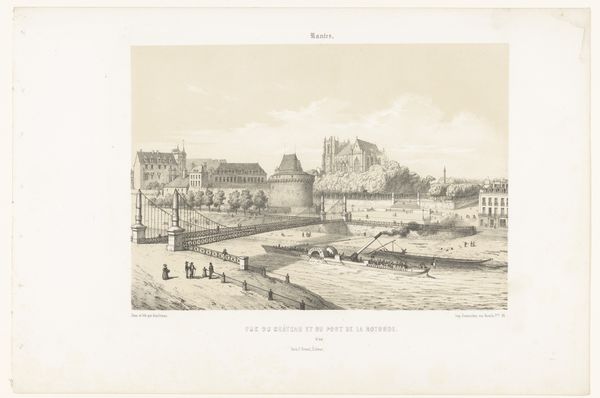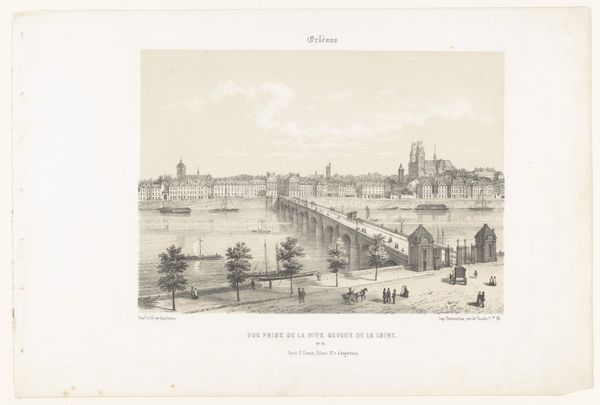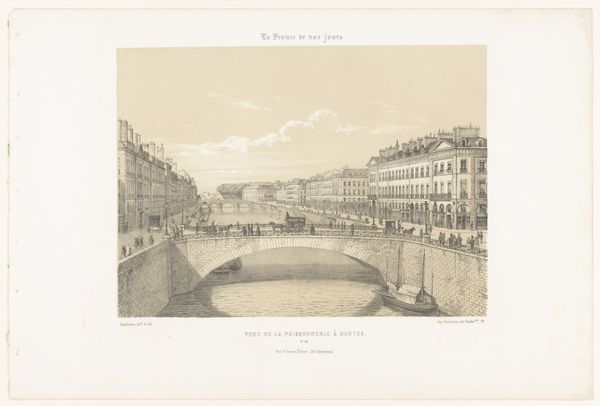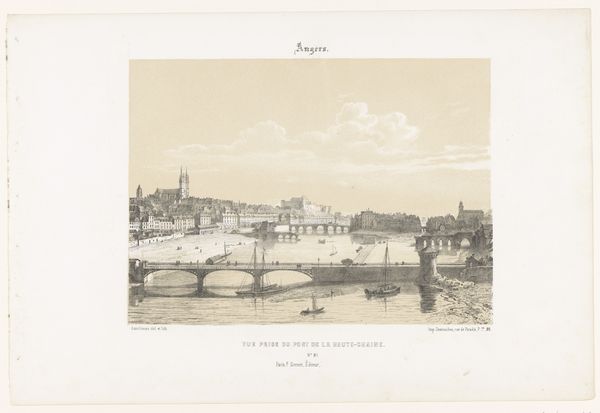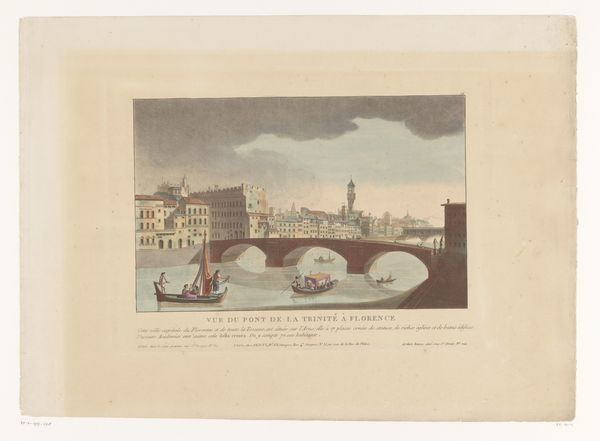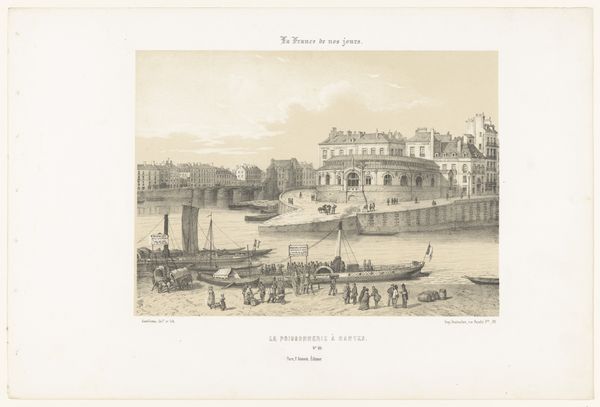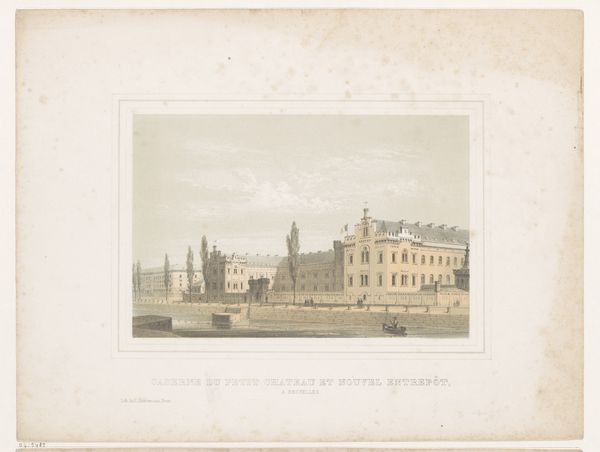
Zicht op het Justitiepaleis en de heuvel van Fourvière in Lyon 1856 - 1858
0:00
0:00
leonaugusteasselineau
Rijksmuseum
Dimensions: height 291 mm, width 434 mm
Copyright: Rijks Museum: Open Domain
Léon Auguste Asselineau made this print of Lyon, France. It's a lithograph, which is a printmaking technique where an image is drawn on a stone or metal plate with a greasy substance, and then printed. The process is interesting here. Lithography emerged in the 19th century, so it's tied to the rise of industrial production. It allowed for relatively quick and inexpensive reproduction of images, feeding the growing demand for visual information and documentation. The hand of the artist is still present in the drawing on the plate, but the multiplication of that image speaks to a different kind of labor. The subject matter here also points to this theme. The Palais de Justice, prominently featured, represents the power structures of the city and its legal system. The lithograph itself, through its reproducible nature, democratizes access to this image, challenging the traditional hierarchies of art and power. So, next time you look at a print, consider not just the image, but the process that brought it into being and the social context it reflects.
Comments
No comments
Be the first to comment and join the conversation on the ultimate creative platform.
